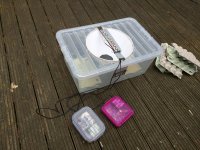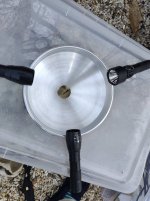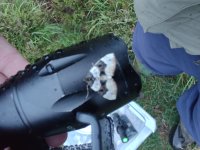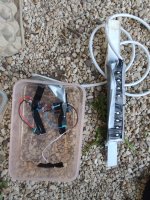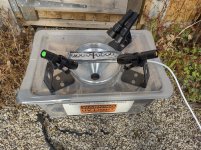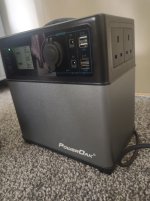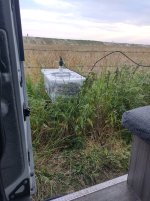If anyone is interested, I have spent time making an LED moth trap, using the electronics design in the book "How to build your own moth trap", and based the box on a DIY design that I saw somewhere on birdforum.
Initial results using the above book's single purple LED weren't good at all, so I replaced the single T10 LED, with a range of LEDs from futureeden, which seem to have brought in better results.
Results seem pretty good, not quite as good as the MV trap I used to run in my garden, but not awful. Maybe 70-80% of numbers and species.
A few new species for the garden so far, but no Hawkmoths which is strange, although early days yet. (The MV trap would have regular Poplar and Elephant)
Of course it has the advantage that it is lightweight and totally portable, which I aim to exploit in the future.
I have yet to resolve the waterproofing of the LED / wiring. I initially used a clear plastic cover, but that must have stopped the UV as I got no moths with it fitted. I will use black tape over the wiring instead to give it some protection whilst leaving the LEDs uncovered.
Total cost was around £70 I guess. Uses 16x rechargeable AA batteries which is a bit of a pain, but I do get two nights per charge. Someone with better electronics knowledge could probably improve on this. (I was just happy to get here without blowing the LEDs!)
Initial results using the above book's single purple LED weren't good at all, so I replaced the single T10 LED, with a range of LEDs from futureeden, which seem to have brought in better results.
Results seem pretty good, not quite as good as the MV trap I used to run in my garden, but not awful. Maybe 70-80% of numbers and species.
A few new species for the garden so far, but no Hawkmoths which is strange, although early days yet. (The MV trap would have regular Poplar and Elephant)
Of course it has the advantage that it is lightweight and totally portable, which I aim to exploit in the future.
I have yet to resolve the waterproofing of the LED / wiring. I initially used a clear plastic cover, but that must have stopped the UV as I got no moths with it fitted. I will use black tape over the wiring instead to give it some protection whilst leaving the LEDs uncovered.
Total cost was around £70 I guess. Uses 16x rechargeable AA batteries which is a bit of a pain, but I do get two nights per charge. Someone with better electronics knowledge could probably improve on this. (I was just happy to get here without blowing the LEDs!)





